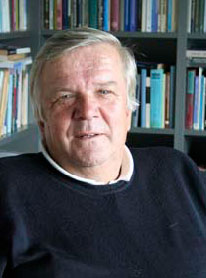 |
Issue 31 (3/2010)
|
|||
FSD Bulletin is the electronic newsletter of the Finnish Social Science Data Archive. The Bulletin provides information and news related to the data archive and social science research.
|
Column: Sir Francis Galton's ProblemMatti Alestalo
Galton acted as the President at a meeting of the Royal Anthropological Institute of Great Britain and Ireland in 1889 when anthropologist Edward B. Tylor presented his results on the development of the institutions of marriage and descent. Tylor had compiled information for more than 200 cultures. He aimed to strengthen and systematize anthropological research methods. The method called "social arithmetic" could be used to prove that the development of institutions may be investigated on a basis of tabulation and classification. This was a way to overcome the resistance of mathematicians, physicists, chemists and biologists used to exact science. Anthropological subjects would come under scientific discussion. Galton praised the clarity of the presentation but made the criticism that not all Tylor's cases constituted independent cases. Some of them derived from a common source. It makes no sense to compare copies. The solution to the problem is that cases which share a common origin are presented together and, if need be, weighted. In comparative research, Galton's problem has been brought up in particular when evaluating the effects of diffusion. Is the correlation detected between variables a cause and effect relationship or merely a question of societies learning from each other or at least borrowing apparently well-functional modus operandi from each other? The growing globalization of the world has made some scientists willing to quietly bury comparative research. The influence of cross-national political and financial organizations has increased and interaction between cultures multiplied. Purists have argued that we live in a world where N=1. The saga of comparative research has come to an end. Be that as it may, social structures and processes are not the simplest of phenomena to study. Economic history has provided good examples of how one and the same invention may have had opposite effects in different cultures. In Britain, railways accelerated the process of industrialization, by facilitating transportation and leading to increased industrial manufacture due to the demand for rails, rail cars and locomotives. In Russia, on the other hand, the railways became the transportation method for the army and the rich. Building the railways took funds away from industrial investments. Comparative research cannot sweep Galton's problem under the carpet. Researchers just need to have a sensitive eye when analysing the differences and similarities of phenomena under study. Those who like to remind us of the ever increasing influence of cross-national operations and diffusion must be shown how varied the effects of the one and same operation can be. Anatole France taught us that all men are equal in the eyes of the law. The law forbids both the rich and the poor alike to sleep under bridges.
|
 As is the case in the history of many other sciences, Sir Francis Galton (1822-1911) has taken his place in the history of comparative sociology. One of its key methodological problems is named after him.
As is the case in the history of many other sciences, Sir Francis Galton (1822-1911) has taken his place in the history of comparative sociology. One of its key methodological problems is named after him.